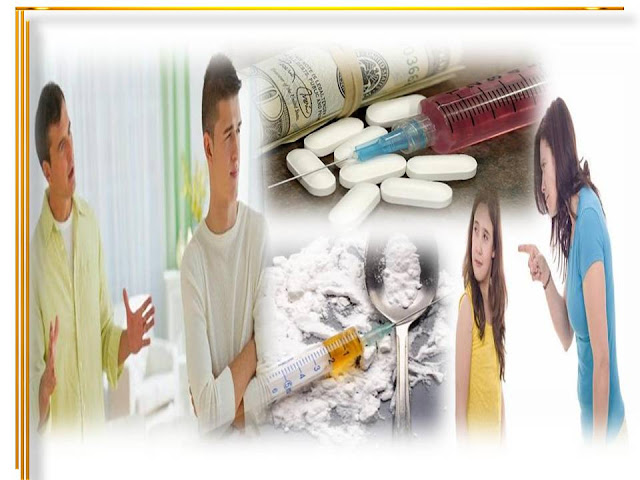Hebrews 10:25 We
should not stay away from our assembly, 13 as is the custom of some, but
encourage one another, and this all the more as you see the day drawing near.
In
the Philippines, police records show 5,882 people were killed[1] across the country since President Rodrigo Duterte
took office on June 30. From this figure 2,041 drug suspects were killed during
police operations from July 1 to December 6, while another 3,841 were killed by
unknown gunmen from July 1 to November 30, according to ABS-CBN news.
With
this alarming death rate, what how can ever community help?
President
Rodrigo Duterte says: Rather than “wait” for people to die from extrajudicial
killings, priests, cardinals, and bishops can help by instead preaching to
addicts and pushers to abandon illegal drugs. You want the killings to bring to
a end? All you have to do is to preach because most of the people here are
Catholic. If you are a good priest, you will say, 'You will die unless you
leave drugs behind.' Then you would have helped, he added.
These
words of the president are indeed with sense. Most drugs of abuse can alter a
person’s thinking and judgment, leading to health threats, including addiction,
drugged driving and infectious disease. There is a scientific evidence that
majority of drugs could potentially harm an unborn baby.[2] Thus these words of the president
need attention.
Conversely,
Cotabato Archbishop Orlando Cardinal Quevedo said that the tolerance
of some Filipinos for the drug-related killings proves that many of them do not
practice their Christian faith. Hence, as a practicing Catholic, it’s
everyone’s commitment to spread the good news than be constantly silent and
nitpicking.
How did drug addiction start?
Amphetamine
was first synthesized in 1887 in Germany. Originally called
phenylisopropylamine, it was, for a long time, a drug in search of use,
making an effort to find treatment from decongestion to depression. In the
1930s, it was initially marketed as Benzedrine, as an over-the-counter inhaler
to cure nasal congestion and asthma.
Methamphetamine was
discovered in Japan in 1919. The crystalline powder was soluble in water,
creating it a perfect candidate for injection. In the late 30s, it found use
for narcolepsy and Attention Deficit Hyperactivity Disorder (ADHD). It is still
legally produced in the U.S., put on the market under the trade name Desoxyn
(Abbott. PDR 2001)with indications for ADHD and for short-term therapy in
exogenous obesity.
Amphetamines
were widely used as stimulants to keep the fighting men going during World War
II. At the time, American soldiers used more amphetamines than the rest
of the world did during WWII. After World War II, when military surplus became
accessible to the public, methamphetamine abuse became epidemic.
The
United States in the 1950s legally manufactured tablets of both
dextroamphetamine (Dexedrine) and methamphetamine (Methedrine) became readily
available and were used non-medically by college students, truck drivers, and
athletes. As use of amphetamines increased, so did their abuse. Amphetamines
became a cure-all for such things as weight control to treating mild
depression.
In
the 1960s, the route and degree of abuse changed noticeably with the amplified
accessibility of injectable methamphetamine. The 1970 Controlled Substances Act
severely restricted the legal production of injectable methamphetamine, causing
its use to a great extent. It is at present a Schedule II stimulant finding
limited use for narcolepsy, attention-deficit disorder, and for a limited time,
as an appetite suppressant for obesity.
In
the 1980s, the smokable form of methamphetamine, “ice,” became obtainable which
is smoked in glass pipes like crack cocaine, emitting no odor, with effects
lasting for 12 hours or more.
In
the mid-80s, methamphetamine was introduced into the fringe circle of use in
the Philippines. In less than two decades, it has broken out of the urban
subcultures and became accessible into the rural communities with dreadful
effect. On the other hand, its use has gone through a rebirth in the U.S. and
has already surpassed cocaine use according to a 2004 study.
In the U.S., methamphetamine use rises as other drug use falls from 2000 to 2004. Globally, the use of amphetamine arrived at 30 million (0/7% of the population age 15 to 64 years old) according to an UNODC report. Like Thailand, Japan, Korea and Taiwan, the Philippines takes methamphetamine as the drug of choice; Asia accounting for 60% of methamphetamine users.
Amphetamine,
Methamphetamine and Ecstasy are grouped as ATS, amphetamine-type stimulants.
Synthetic drugs, production estimates are based on seizures, and of these, 80%
were amphetamine and methamphetamine. Of the 12,000 secret ATS labs dismantled
in 2002, most were producing methamphetamines.
Shabu, a powerfully addictive meth stimulant, easily accessible and affordable, is the drug of choice of over 90% of Filipino drug users. Usually, a “fix” is used every 3 hours.
A single “tingi” (retail) or 0.1 gm costs P100 while one mongo-sized "gram" costs P1,000-2,000. (In contrast, 1997 methamphetamine prices in the U.S. ranged from $3,500 TO $30,000 per pound, $400 TO $2,800 per ounce, and $37 per gram in the Seattle area to $300 per gram in the New York.
Shabu, a powerfully addictive meth stimulant, easily accessible and affordable, is the drug of choice of over 90% of Filipino drug users. Usually, a “fix” is used every 3 hours.
A single “tingi” (retail) or 0.1 gm costs P100 while one mongo-sized "gram" costs P1,000-2,000. (In contrast, 1997 methamphetamine prices in the U.S. ranged from $3,500 TO $30,000 per pound, $400 TO $2,800 per ounce, and $37 per gram in the Seattle area to $300 per gram in the New York.
Abuse patterns
Low-intensity - casual
application, ingesting or swallowing, no psychologically addiction, used for
weight-loss, need for sleeplessness conditions, overtime-shifts.
Binge -
heavy irregular application; smoking or injection; high can last 4-16 hours;
psychologically addicted; more than low-intensity, less than high-intensity.
High -
intensity abusers: also known as speed freaks; ceaselessly looking for that
quality of the “original perfect rush,” commonly smoking or injecting;
requiring drug to a greater extent to achieve the high; psychologically
addicted. The “fine-tuning” stage is most hazardous.
A
mandatory “surprise” testing in one precinct in the U.S. found 69% positive for
drug use whose preferred manner of use is smoking, compared to snorting,
injecting, or oral ingestion specifically dissolved in a drink.
Street
meth is never pure, cut with a miscellany of substances, including talc or
heroin.
How does meth perform?
Methamphetamine stimulates release of unnecessary amounts of the neurotransmitter dopamine. Dopamine is produced in the nerve cells of the ventral tegmental area and is concerned with pleasure regulation in the brain. Upon penetrating the nerve cell, meth causes the stimulates let loose of dopamine, which then binds to specialized receptors of other nerve cells forming the typical “rush.”
Short-term effects (The effects are similar to cocaine but last longer - 4 to 16 hours.
- Intensified attention and energy
- Too much talking
- Ecstasy, reduced weariness
- Amplified doings, enhanced sexuality
- Reduced appetite
- Increased respiration
- Hyperthermia, infrequently leading to convulsions and lethal levels.
Long-term effects
- Addiction
- Anxiety, confusion, and sleeplessness
- Addiction psychosis
- Paranoia
- Hallucinations, visual and auditory
- Mood disturbances
- Repetitive motor activity
- Stroke
- Weight loss
- Violent behavior, homicidal or suicidal thoughts
- Crank bugs' - Formication (sensation of insects creeping on the skin) causing users to pick at themselves causing ulcerations on the hand and arms.
- Disturbed sleep patterns; decreased sleep needs
- Disinterest in usual social interactions, sex, food
- Cardiovascular: Inflammation of the heart lining
- Stereotypy behavior - performing routine acts over and over again.
Meth mouth
An oral-dental problem is unique to meth abusers wherein natural pearly teeth can change in a few months into twisted grayish-brown stubs that fall out in the long run.
Signs
and symptoms of toxicity include:
- Arrhythmias
- Too much sweating
- hypertension
- hyperthermia
- wakefulness
- bad temper
- mydriasis (dilation of pupils)
- psychosis
- seizure
- fast heart rate
- tremors
The
stimulant effects from methamphetamine can last for hours, unlike the minutes
from 'crack' cocaine. Frequently, the meth user remains sleepless for days.
After injecting or smoking, the immediate rush or high is called a “swap,”
short-lived, minutes long. Snorting (within 3 to 5 minutes) and ingestion
(within 15-20 minutes) causes a euphoria, a ‘high’ rather than an intense
‘rush’ within 15-20 minutes. As the high fades, the user enters a stage called
“tweaking”, becoming prone to violence, delusions and paranoia. Others try to
buffer through this stage by the use of cocaine or heroin. Like heroin and
cocaine, methamphetamine can be snorted, smoked or injected. Tweaking may be
mistaken as an overconfident and noisy drunkenness.
The
crash occurs after the tweaking. To the binge-abuser, with the diminution of
body epinephrine, the body “crashes” into a sleep, seemingly, a “lifeless”
condition that may last from 1-3 days, during which time the abuse poses no
threat to anyone. After the crash, in-between binge, the abuser is in a normal
stage.
While
there are no severe physical withdrawal syndromes on discontinuation of chronic
use, a patient may experience a subtle creeping in of fatigue, l paranoia,
lethargy, aggression, anxiety, or an intense longing for the drug and even a
suicidal state. Re-use or re-indulgence of methamphetamine will break this
train of symptomatology. It is thought that extended exposure can cause damage
to the dopamine-producing brain cells, with more intense damage on
serotonin-containing cells and concerns as to whether this can contribute to
the psychosis seen in long-term users.
Meth
rehab success rate is low; 93% in traditional treatment programs rgo back to
abuse.
Hypersexual Behavior and AIDS
Meth induces hypersexual behavior, and especially with anal intercourse, HIV / viral transmission concerns are raised and unprotected receptive users are put in greater risk. Adding to the risk is the anal insertion of meth and consequent damage to the rectal lining that increases the likelihood of HIV transmission.
Suppliers / Dealers
China-based syndicates overseeing drug-trafficking operations. Production materials smuggled from mainland China by drug syndicates using Hongkong and Taiwan as transhipment points.
In the Philippines, there have been reports of increasing Muslim-based operations.
How long does meth remain detectable?
The regular dose of amphetamine is 5 to 10 mg - much higher in tolerant subjects. It has a half life that differs between 10 and 30 hours.
After
smoking 22 mg of methamphetamine hydrochloride, it stays evident in the blood
for 48 hours, at a cutoff detection level of 3 ng/mL. At 22 mg smoking dose,
methamphetamine as base (“Ice”), stays evident in the urine (detection level
300 ng/mL) for 60 hours.
After
a controlled administration of 10 mg of methamphetamine, the final detection
time in urine after a single dose at the lime of quantification (LOQ), 2.5
ng/mL) was 87.2 ± 52 (extreme values 46-144) hours.
A
single cause of drug addiction is not known,[3] but causes of drug addiction tend
to be psychological, environmental, genetic.
Drug
addiction is the obsessive and frequent use of increasing amounts of drugs with
the appearance of withdrawal symptoms when drug use stops. While the particular
causes of drug addiction are not known, genetic, psychological and
environmental factors are thought to play a significant role; it is possibly
multiple factors that lead to drug addiction.
Some
drug addicts also recognize drug use and ignorance as a cause of drug
addiction. Repeatedly, if a person is coping with pain-management issues, the
drug they receive, like oxycodone, can be very addictive. The unawareness of
the drug's addiction potential, together with the physical pain of the
condition, turns to be a cause of drug addiction.
Psychological causes of drug dependence
While
biological causes of drug addiction have been hinted at, many people still
believe psychological factors consist of the greater part of what causes drug
addiction. Some of the psychological causes of drug addiction root from trauma,
often when the drug addict is young. Sexual or physical abuse, abandonment, or
domestic disarray can all lead to psychological stress, which people try to
"self-medicate" (reduce the tension’s pain through drug use). This
self-medication becomes a cause of drug addiction.
Other
psychological causes of drug addiction involve:
A
mental disease such as depression
Incapacity
to commune with others, lack of friends
Poor
performance at work or school
Weak
tension management skills
Environmental Causes of Drug Addiction
Drug
addiction may stem from an individual's environment. It is more common in
environments where drug abuse is seen or where it's seen as tolerable. Kids who
grow up in homes with drug addicts often become drug addicts themselves.
Those
with negligent, abusive or careless parents are more prone to drug abuse. One
cause of drug addiction can be the mixture of drug trialing with the lack of
parental supervision.
Other environmental factors as causes of drug abuse
include:
Involvement
in a sport where performance-enhancing drugs are encouraged
A
peer group that uses or promotes drug use
Those
of lower socio-economic status are at bigger danger of drug addiction
Gender
and ethnicity can be a factor of addiction on some drugs
Genetic Causes of Drug Addiction
Genetics
may have a role in causing drug addiction. According to studies of twins, it
emerges that half of someone's risk of becoming addicted to drugs is genetic.
Genetic causes of drug addiction appear to involve multiple gene sequences and
science has not yet been able to identify all the genes involved. Nevertheless,
it is known some genes, like those involved in brain receptors of nicotine, as
part of the cause of drug addiction.
There
are several causes of drug addiction[4] which include:
- Crime
- Unhappiness
- Marital separation
- Major sickness
- Death of a loved one
When
taking drugs, whether it’s for medical purposes or recreation, there is a
benefit or reward that an individual is trying to attain.
Pain
medication for instance is intended to result in relief to an injured or
stressed area of the body. The starting phases of addiction set a person off to
crave more and to use more. The inadvertent effect of that is a person’s need
to take more and more of the drug to acquire similar outcome.





























No comments:
Post a Comment